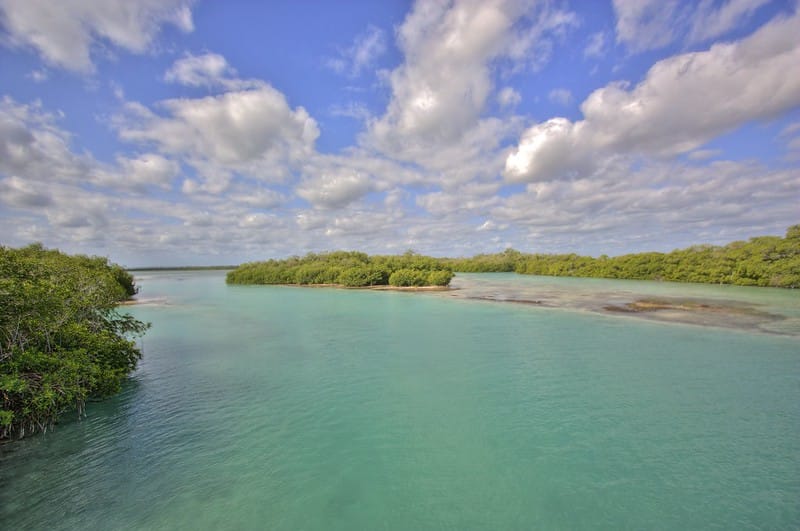Imagine yourself surrounded by lush green forests, colorful coral reefs, and exotic wildlife. Picture yourself exploring awe-inspiring landscapes that have been carefully preserved to maintain their natural beauty and biodiversity. In Mexico, this dream becomes a reality as you journey through its breathtaking Biosphere Reserves. These protected areas serve as a sanctuary for numerous species of plants and animals, offering visitors an unparalleled opportunity to witness the wonders of nature up close. From the dense tropical jungles of Calakmul to the enchanting underwater world of Banco Chinchorro, each Biosphere Reserve invites you to embark on a thrilling adventure and discover the natural marvels that Mexico has to offer.
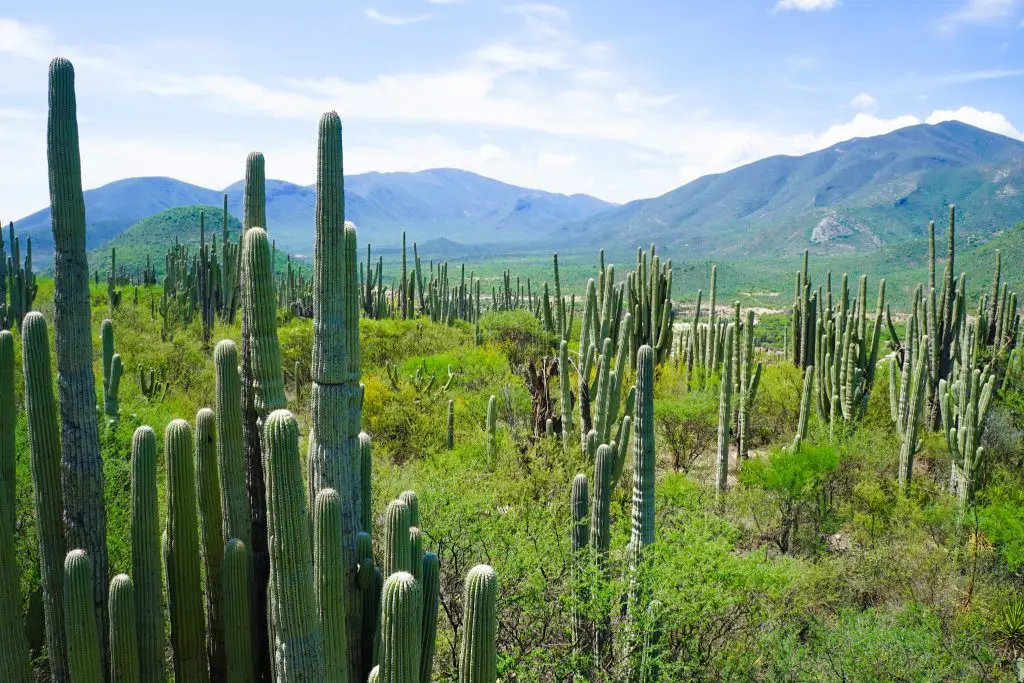
Biosphere Reserves in Mexico
Mexico is blessed with an abundance of natural wonders, and its biosphere reserves truly showcase the country’s ecological diversity. These reserves are designated areas set aside for the conservation of biodiversity and the sustainable use of natural resources. With their pristine landscapes, unique flora and fauna, and ongoing conservation efforts, Mexico’s biosphere reserves have become havens for both wildlife and nature enthusiasts alike.
Overview
Biosphere reserves in Mexico are a crucial element in the country’s conservation strategy. These reserves serve as models for sustainable development, promoting the harmonious coexistence of human communities and the natural environment. Mexico is among the top countries in the world with the highest number of biosphere reserves, highlighting its commitment to preserving its ecological treasures.
Importance of Biosphere Reserves
Biosphere reserves play a vital role in protecting and preserving biodiversity in Mexico. These reserves serve as living laboratories, enabling scientists to conduct research and gain a deeper understanding of the country’s ecosystems. They also provide habitats for countless plant and animal species, including endangered and endemic ones. Beyond their ecological importance, biosphere reserves contribute to the socio-economic development of local communities through sustainable tourism and the promotion of traditional practices.
Designation of Biosphere Reserves in Mexico
The designation of biosphere reserves in Mexico follows a rigorous process to ensure their effective conservation. The Mexican government, in collaboration with international organizations like UNESCO, assesses potential sites based on their ecological significance. Once a reserve is designated, it is divided into three zones: a core area, a buffer zone, and a transition zone. These zones differ in terms of land use and level of protection, creating a framework for conservation, research, and sustainable development.
El Vizcaíno Biosphere Reserve
Location and Size
Nestled in the Baja California Peninsula, the El Vizcaíno Biosphere Reserve is a vast and diverse ecological paradise. Spanning over 9,625 square miles (24,800 square kilometers), it is one of the largest biosphere reserves in Mexico. Its location between the Pacific Ocean and the Gulf of California creates a unique ecosystem characterized by contrasting landscapes and a rich biodiversity.
Flora and Fauna
El Vizcaíno Biosphere Reserve is home to a remarkable array of flora and fauna. Within its boundaries, you can find over 200 plant species, including endemic cacti and desert vegetation. The reserve is also a sanctuary for endangered marine mammals, such as the California gray whale, which migrates thousands of miles to its breeding grounds in the nearby Ojo de Liebre Lagoon. Other notable species include bighorn sheep, pronghorn antelope, and the elusive Peninsular mule deer.
Conservation Efforts
Efforts to conserve the natural wonders of El Vizcaíno Biosphere Reserve have been instrumental in protecting its unique biodiversity. The reserve’s management focuses on sustainable resource use, environmental education, and local community involvement. Conservation programs aim to monitor wildlife populations, restore degraded habitats, and promote sustainable fishing practices in collaboration with local fishermen. These efforts ensure the long-term sustainability of El Vizcaíno’s delicate ecosystem.
Bacalar Chico National Park and Marine Reserve
Location and Size
Located along the northeastern coast of the Yucatan Peninsula, Bacalar Chico National Park and Marine Reserve is a stunning protected area that encompasses both land and marine ecosystems. Spanning approximately 15,020 acres (6,080 hectares), this reserve showcases the unparalleled beauty and ecological importance of the Mesoamerican Barrier Reef System.
Land and Marine Biodiversity
Bacalar Chico National Park and Marine Reserve is a haven for biodiversity both on land and underwater. Its terrestrial habitats consist of coastal dunes, mangroves, and tropical forests, providing a refuge for a variety of plant and animal species. The marine portion of the reserve boasts vibrant coral reefs teeming with colorful fish, sea turtles, and endangered manatees. Migratory birds also frequent the area, making Bacalar Chico a birdwatcher’s paradise.
Conservation Initiatives
The conservation initiatives in Bacalar Chico National Park and Marine Reserve are focused on preserving the pristine ecosystems and promoting sustainable tourism. The reserve’s management works closely with local communities to develop sustainable fishing practices and reduce the impact of tourism activities on the fragile marine environment. Additionally, educational programs raise awareness about the importance of protecting the reserve’s biodiversity and encourage the involvement of both locals and visitors in its conservation.
Montes Azules Biosphere Reserve
Location and Size
Situated in the southern Mexican state of Chiapas, Montes Azules Biosphere Reserve spans over 969,955 acres (392,320 hectares) of tropical rainforest. This vast area is part of the larger Lacandon Jungle, one of the last remaining rainforests in North America, making it a crucial conservation area.
Rainforest Biodiversity
Montes Azules Biosphere Reserve is a treasure trove of biodiversity, boasting an astonishing variety of plant and animal species. Its rich rainforest harbors over 2,000 species of plants, including towering mahogany trees, unique orchids, and medicinal plants used by indigenous communities. The reserve is also home to an impressive array of fauna, including jaguars, tapirs, spider monkeys, and numerous species of birds, reptiles, and amphibians.
Challenges and Conservation Actions
The conservation of Montes Azules Biosphere Reserve faces several challenges, including illegal logging, poaching, and encroachment by agricultural activities. To tackle these threats, various conservation actions are being implemented. Local communities participate in forest management programs, supporting sustainable practices and alternative livelihoods. Additionally, increased surveillance and law enforcement efforts help protect the reserve from illegal activities, preserving its invaluable biodiversity for future generations.
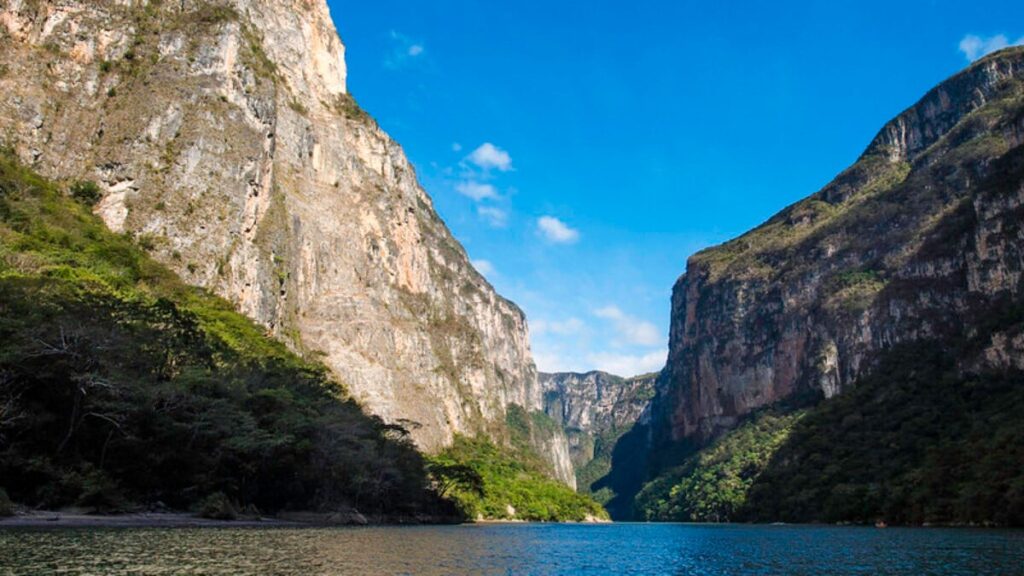
Sian Ka’an Biosphere Reserve
Location and Size
Stretching along Mexico’s eastern coast in the state of Quintana Roo, the Sian Ka’an Biosphere Reserve covers an impressive 1.3 million acres (526,000 hectares) of diverse ecosystems. Its name, which means “Origin of the Sky” in Mayan, aptly describes the awe-inspiring landscapes found within its boundaries.
Ecosystem Diversity
Sian Ka’an Biosphere Reserve is renowned for its incredible range of ecosystems, including mangroves, wetlands, cenotes, and coral reefs. These diverse habitats support a remarkable variety of plant and animal species, both terrestrial and marine. Visitors can observe howler monkeys swinging from tree to tree, spot vibrant bird species soaring above the wetlands, or explore the underwater world teeming with colorful fish and mesmerizing coral formations.
Community Engagement in Conservation
Sian Ka’an Biosphere Reserve stands as a model for community engagement in conservation. Local Mayan communities actively participate in the management of the reserve, integrating traditional knowledge and sustainable practices into conservation efforts. Community-based ecotourism initiatives provide economic opportunities while preserving the natural and cultural heritage of the area. Through their involvement, local communities play a vital role in protecting the ecosystems and ensuring the long-term sustainability of Sian Ka’an.
La Michilía Biosphere Reserve
Location and Size
Nestled in the heart of the Sierra Madre Occidental mountain range in the state of Durango, La Michilía Biosphere Reserve covers approximately 219,036 acres (88,628 hectares) of rugged terrain and stunning landscapes. This reserve is an oasis of biodiversity and cultural heritage, embodying the natural and cultural richness of Mexico.
Unique Flora and Fauna
La Michilía Biosphere Reserve is renowned for its unique and diverse flora and fauna. Its montane forests are home to a wide range of plant species, including endemic pines and oaks. The reserve also provides habitat to various wildlife species, such as black bears, tapirs, pumas, and the critically endangered thick-billed parrot. This impressive biological diversity makes La Michilía a valuable conservation area.
Collaborative Conservation Projects
Conservation efforts in La Michilía Biosphere Reserve involve collaborative initiatives between the government, local communities, and non-profit organizations. These projects focus on reforestation, watershed management, and promoting sustainable agricultural practices. Additionally, ecotourism ventures provide economic opportunities for local communities, creating incentives for the preservation of the reserve’s unique biodiversity and cultural heritage.
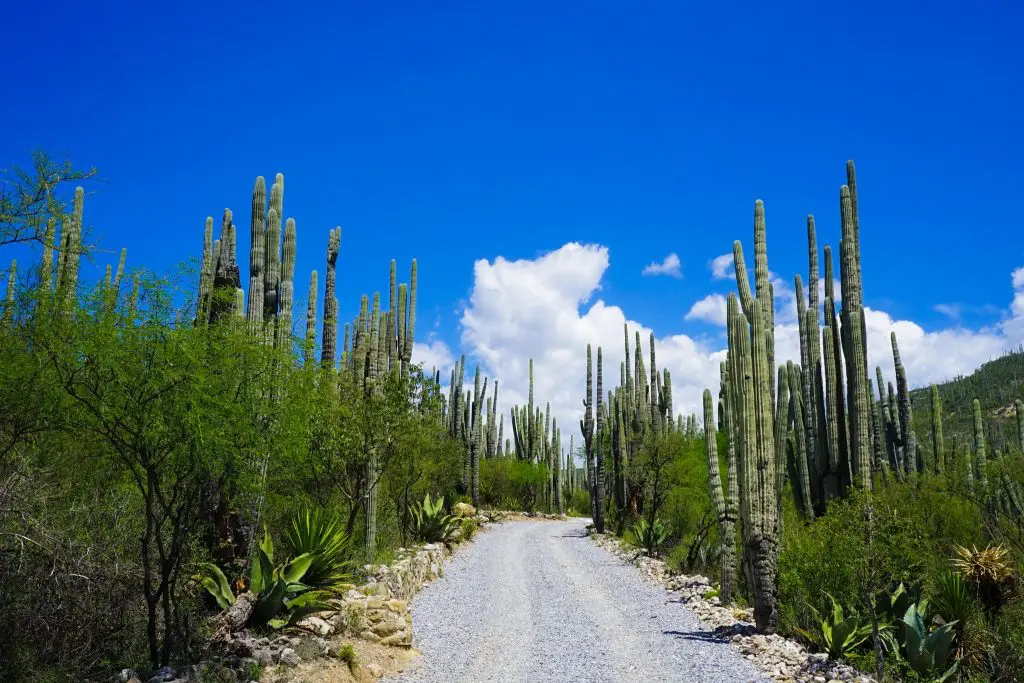
Monarch Butterfly Biosphere Reserve
Location and Size
Nestled in the mountains of Michoacán and the State of Mexico, the Monarch Butterfly Biosphere Reserve encompasses around 200 square miles (520 square kilometers) of mountainous terrain and forested areas. This reserve serves as a sanctuary for one of nature’s most remarkable phenomena – the annual monarch butterfly migration.
The Monarch Butterfly Migration
The Monarch Butterfly Biosphere Reserve is globally recognized for hosting the awe-inspiring annual migration of millions of monarch butterflies. These delicate creatures travel over 3,000 miles (4,800 kilometers) from Canada and the United States to the reserve’s oyamel fir forests, where they cluster together in breathtaking masses, covering trees in vibrant orange and black hues. Witnessing this extraordinary natural spectacle is a once-in-a-lifetime experience.
Conservation and Sustainable Tourism
Conservation efforts and sustainable tourism practices are crucial to the protection of the monarch butterfly migration. Strict regulations are in place to safeguard the delicate habitats of the butterflies, ensuring that visitors do not disturb their wintering grounds. Education and awareness programs promote responsible tourism, emphasizing the importance of minimizing human impact on this fragile ecosystem. By supporting sustainable tourism initiatives, visitors contribute to the conservation of the monarch butterfly and its unique migration phenomenon.
Loreto Bay National Park and Marine Reserve
Location and Size
Loreto Bay National Park and Marine Reserve encompasses the stunning coastal area of the Gulf of California in Baja California Sur. Extending over 2,065 square miles (5,348 square kilometers), this reserve protects a remarkable array of marine ecosystems, from rocky reefs to seagrass meadows and mangroves.
Marine Biodiversity
Loreto Bay National Park and Marine Reserve is a treasure trove of marine biodiversity. Its turquoise waters support a vast array of marine life, including over 800 species of fish, sea turtles, dolphins, and whales. The reserve is particularly renowned for being home to one of the largest concentrations of the endangered vaquita porpoise, making its conservation of utmost importance.
Conservation Challenges and Solutions
The conservation of Loreto Bay National Park and Marine Reserve faces numerous challenges, including overfishing, habitat degradation, and unsustainable tourism practices. To tackle these issues, conservation efforts focus on promoting sustainable fishing practices among local communities and enforcing fishing restrictions. Additionally, education and awareness programs are implemented to ensure visitors understand the importance of responsible tourism and the need to protect the reserve’s fragile marine ecosystems.
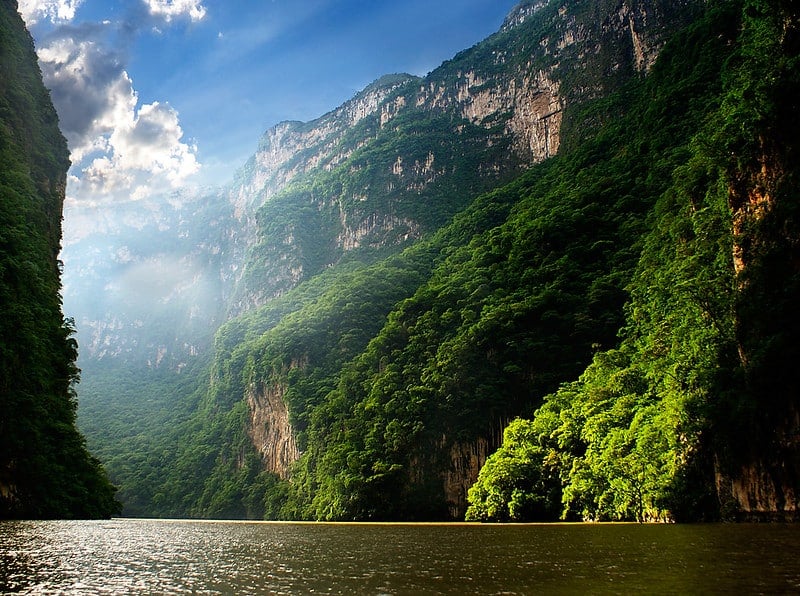
Copper Canyon Adventure Park
Location and Size
Nestled within the spectacular landscapes of the Sierra Tarahumara in Chihuahua, Copper Canyon Adventure Park offers visitors a unique blend of natural beauty and adrenaline-fueled activities. Spanning approximately 600 acres (243 hectares), this park showcases the awe-inspiring geological formations and diverse wildlife of the area.
Geology and Biodiversity
Copper Canyon Adventure Park is renowned for its extraordinary geology, characterized by towering cliffs, deep canyons, and picturesque waterfalls. Its diverse ecosystems support a wide range of flora and fauna, including species such as cougars, golden eagles, and various types of cacti. The park’s natural wonders provide a breathtaking backdrop for thrilling adventure activities, such as zip-lining, hiking, and rock climbing.
Sustainable Tourism Efforts
In line with Mexico’s commitment to sustainable tourism, Copper Canyon Adventure Park implements various measures to minimize its environmental impact. The park follows strict guidelines to protect the local flora and fauna, ensuring that activities do not disturb the delicate ecosystems. Additionally, visitor education programs raise awareness about the importance of preserving the park’s natural heritage, encouraging responsible behavior and fostering a deeper appreciation for the unique biodiversity of the area.
El Triunfo Biosphere Reserve
Location and Size
El Triunfo Biosphere Reserve, located in the southern Mexican states of Chiapas and Oaxaca, covers an impressive 330,000 acres (133,550 hectares) of breathtaking cloud forest. This reserve is renowned for its exceptional biodiversity and is considered one of the most important conservation areas in Mesoamerica.
Cloud Forest Ecosystem
El Triunfo Biosphere Reserve boasts a unique cloud forest ecosystem, characterized by its mist-shrouded canopies and lush vegetation. Within this enchanting forest, you can find an astonishing variety of plant species, including rare orchids, bromeliads, and towering trees covered in moss. The reserve is also a haven for wildlife, hosting endangered species such as the critically endangered Central American spider monkey and the resplendent quetzal.
Conservation Programs and Threats
Conservation programs in El Triunfo Biosphere Reserve are aimed at preserving its fragile cloud forest ecosystem and protecting threatened species. Forest management strategies focus on sustainable logging practices, habitat restoration, and the reduction of illegal activities. However, challenges such as deforestation, agricultural encroachment, and climate change continue to threaten the reserve’s unique biodiversity. Efforts to address these issues include community engagement, research initiatives, and raising awareness about the importance of conservation.
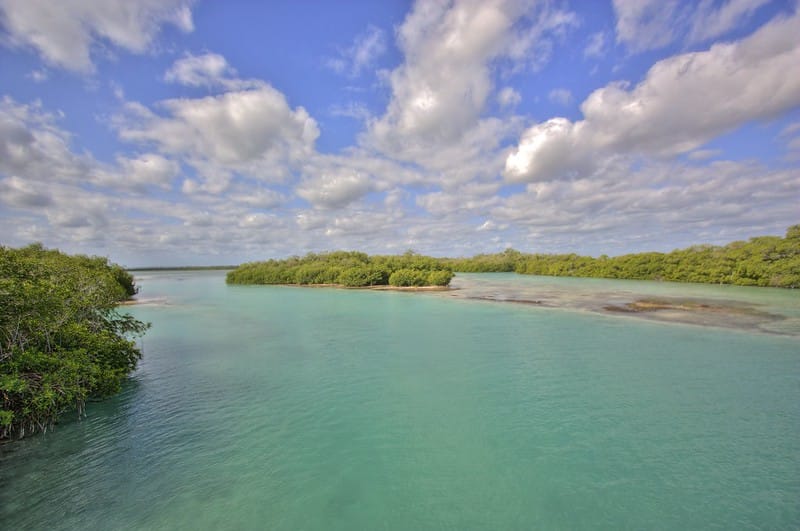
Ría Celestún Biosphere Reserve
Location and Size
Nestled on the Yucatan Peninsula’s western coast in the state of Yucatan, Ría Celestún Biosphere Reserve covers approximately 146,000 acres (59,000 hectares) of pristine wetlands, mangroves, and estuaries. This reserve is a haven for avian diversity, attracting numerous migratory bird species throughout the year.
Avian Diversity
Ría Celestún Biosphere Reserve is a paradise for birdwatchers, boasting an impressive number of bird species. Over 300 species, including flamingos, herons, ibises, and pelicans, can be spotted within the reserve’s boundaries. The reserve’s wetlands serve as crucial stopover points during the migratory journey of many bird species, making it an internationally significant site for bird conservation.
Conservation Projects and Threats
To protect the avian diversity of Ría Celestún Biosphere Reserve, various conservation projects have been implemented. These projects focus on wetland restoration, sustainable fishing practices, and the regulation of tourist activities. However, the reserve faces threats such as pollution, habitat degradation, and illegal hunting. Efforts to address these challenges include strengthening enforcement measures, community involvement in conservation, and raising awareness about the importance of preserving the reserve’s unique avian habitat.
Cabo Pulmo National Park
Location and Size
Located on the southern tip of the Baja California Peninsula, Cabo Pulmo National Park is a marine protected area spanning approximately 27,000 acres (11,000 hectares). This park is renowned for its vibrant coral reefs and abundant marine life, making it a haven for divers and snorkelers.
Marine Life and Coral Reefs
Cabo Pulmo National Park is home to one of the oldest and most successful marine protected areas in Mexico. Its underwater world teems with a stunning variety of marine life, including colorful tropical fish, sea turtles, rays, and even sharks. The park’s eight coral reefs are the northernmost in the Eastern Pacific and have experienced a remarkable recovery due to conservation efforts, providing hope for the restoration of other coral reefs around the world.
Citizen-led Conservation Success
The success of Cabo Pulmo National Park’s conservation efforts can be attributed to the dedicated involvement of local communities. Fishing restrictions and sustainable tourism practices are co-managed by local stakeholders, ensuring the long-term preservation of the park’s marine ecosystems. The community’s commitment to conservation has not only benefited the underwater habitats but also created sustainable economic opportunities through eco-tourism ventures, fostering a mutually beneficial relationship between humans and nature.
In conclusion, Mexico’s biosphere reserves offer a glimpse into the country’s exceptional ecological diversity and serve as living testaments to its commitment to conservation. From the stunning landscapes of El Vizcaíno and the biodiversity-rich Montes Azules to the cultural and natural marvels in La Michilía and Copper Canyon Adventure Park, these reserves showcase the importance of safeguarding our planet’s precious resources. Through collaborative conservation efforts, community engagement, and sustainable tourism practices, Mexico’s biosphere reserves are setting an example for the world, proving that the harmonious coexistence of nature and human communities is not only possible but necessary for the preservation of our planet’s ecological wonders. So, step into these breathtaking biosphere reserves and experience the magic and beauty of Mexico’s natural marvels for yourself.
